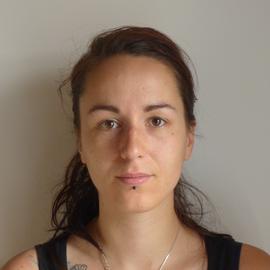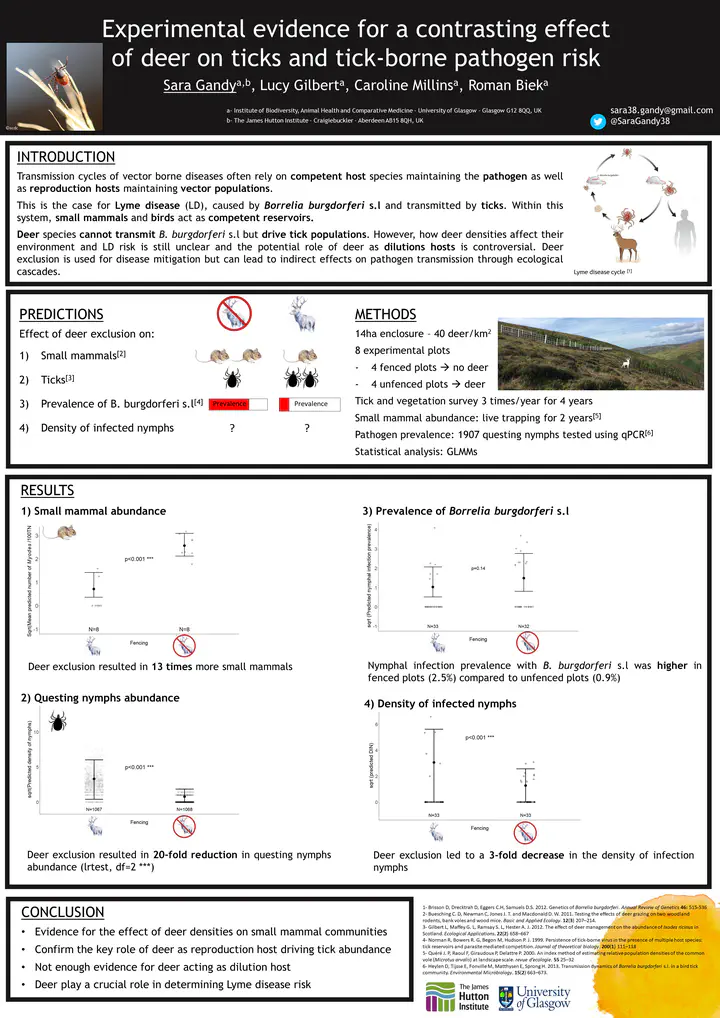Abstract
Transmission cycles of vector borne pathogens rely on multiple hosts; competent species which maintain the pathogen and reproduction hosts which support vector populations. This is the case for Lyme disease (LD), a disease caused by Borrelia burgdorferi s.l and transmitted by ticks. In Scotland, small mammals are competent reservoirs and transmit Borrelia afzelii whereas deer are incompetent hosts, but support tick populations. However, the effect of high deer densities on small mammals and prevalence of B. afzelii remain unclear. To test this an experimental design was used and data on vegetation structure, tick density and rodent abundance was collected. Consistent with our predictions, high deer density was associated with shorter vegetation, higher tick numbers, fewer rodents and lower prevalence of B. afzelii. These preliminary results show how the density of non-competent hosts can modulate the prevalence of a vector-borne pathogen and are consistent with deer acting as dilution hosts.
Date
Dec 10, 2019 11:00 AM — Dec 13, 2019 5:00 PM
Location
Belfast ICC
Belfast,

Research Associate
My research primarily focuses on understanding the ecological drivers of tick-borne diseases to provide insights on the mechanisms involved in transmission cycles, especially on the interactions between ticks, hosts and pathogens. My research includes investigating the impacts of environmental changes (woodland restoration, rewilding) and host community composition (deer, rodent and birds) on tick-borne diseases risks in the UK. Some of my findings uncovered an opposing effect of deer densities on Lyme disease hazard through their positive effects on tick density and negative effects on infection prevalence. I also published work looking at spatiotemporal changes in tick distribution using passive surveillance data and I have been leading the National Tick Survey, which involves collaborating with stakeholders in thirty National Parks and recreational areas to collect ticks and test them for various tick-transmitted pathogens between 2021 and 2024. The goal is to understand disease hazard and temporal variation in areas visited by members of the public and deliver tick awareness messages.
